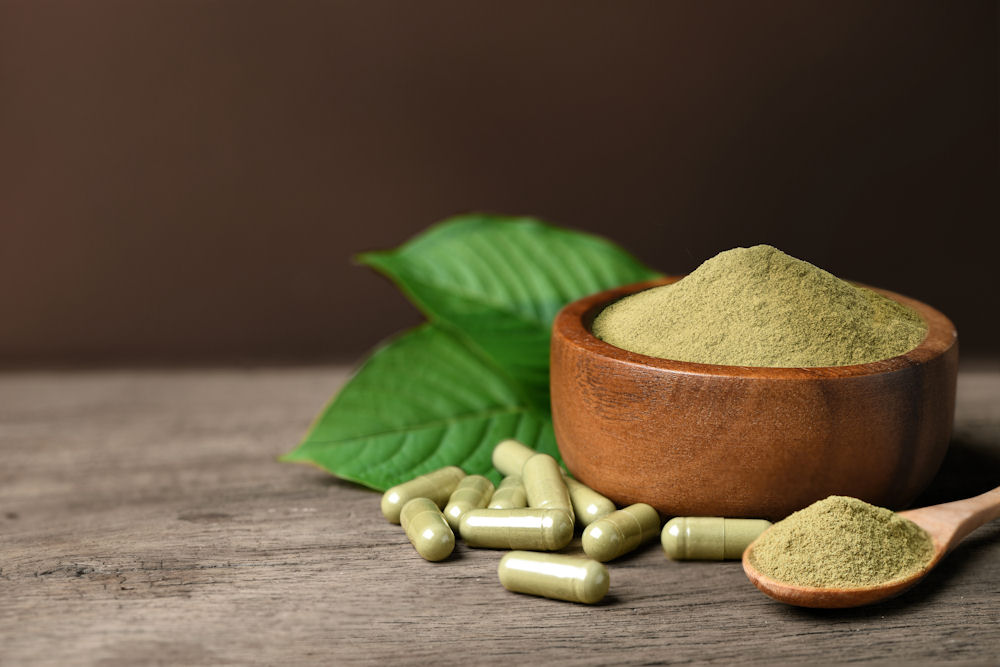Kratom, a tropical tree native to Southeast Asia, has drawn significant attention in recent years due to its complex kratom legality, particularly in states like California. It’s far from a new drug, but many people don’t know its origins. It’s also become more notorious for its occasionally addictive properties, occasionally necessitating kratom detox.
Despite its popularity, the legal status of kratom remains complex and varies widely across different regions. Some states and countries have imposed bans or restrictions, citing safety concerns and the potential for abuse. As the conversation around kratom continues to evolve, it remains a focal point for discussions about natural alternatives to conventional medicine and the ongoing search for effective pain management solutions.
Is Kratom Legal in California?

The kratom legality in California is somewhat ambiguous. Currently, kratom is not classified as a controlled substance under California law, which means it is legal to buy, sell, and possess kratom within the state.
However, this does not imply that kratom is free from regulatory scrutiny. Local jurisdictions may impose specific restrictions on the use or purchase of kratom, such as in the city of San Diego. It’s crucial for residents to stay informed about their local regulations, as these can change and may result in legal consequences if violated.
In addition to the local regulations, the broader conversation surrounding kratom’s safety and efficacy has sparked significant debate among lawmakers, health professionals, and the public. Proponents of kratom argue that it offers various benefits, including pain relief and anxiety reduction, which can be particularly appealing to those seeking alternatives to traditional pharmaceuticals. Conversely, critics raise concerns about potential health risks and the lack of comprehensive research on its long-term effects. The situation will no doubt continue to evolve as more research emerges.
What is the Legal Status of Kratom in the United States?
Across the United States, the kratom legality varies widely from state to state. While kratom remains legal at the federal level, individual states have the authority to regulate or ban the substance altogether. Currently, kratom is illegal in Alabama, Wisconsin, Arkansas, Rhode Island, Indiana, and Vermont have classified kratom as illegal.
In contrast, states such as Utah and Nevada have legalized the use of kratom and have instituted regulations around labeling amounts and potency (along with age restrictions for purchase).
The legal landscape surrounding kratom is further complicated by ongoing debates among lawmakers, health officials, and advocates. Proponents of kratom argue that it offers various benefits, including pain relief and mood enhancement, and they advocate for its responsible use. On the other hand, opponents raise concerns about potential health risks and the lack of comprehensive research on its long-term effects. This dichotomy has led to a patchwork of regulations.
Moreover, the federal government has also shown interest in kratom, with agencies like the Drug Enforcement Administration (DEA) and the Food and Drug Administration (FDA) monitoring its use and potential risks. The FDA has issued warnings regarding kratom products, not approving them for therapeutic use in any way. But as of 2020, kratom is not considered a controlled substance under FDA law. This scrutiny has fueled further discussions about the need for standardized testing and labeling, which could help consumers make informed choices while navigating the complex legal terrain surrounding kratom.
What are the Common uses of Kratom?
Kratom is utilized for various reasons, with users reporting several beneficial effects. Common uses include:
- Pain Relief: Many users turn to kratom as a natural alternative for managing chronic pain conditions. This may appeal to people looking to avoid strong opioids.
- Energy Boost: At lower doses, kratom is said to enhance energy levels and productivity.
- Anxiety and Depression Relief: Some individuals use kratom to alleviate symptoms of anxiety disorders and/or depression.
- Withdrawal Management: Kratom is often mentioned in discussions about its potential to help individuals manage withdrawal symptoms from opioids. However, it is important to note that addiction and addictive tendencies can still emerge with kratom.
The effectiveness and safety of kratom remain under scrutiny, which has led to ongoing debates about kratom legality. Users have reported varying experiences, with some finding significant relief from their symptoms and others experiencing adverse effects. This variability can be attributed to factors such as dosage, strain type, and individual body chemistry. The method of consumption can also impact the experience. Kratom can be ingested in several ways, including as a powder mixed into beverages and in capsules. Each method may lead to different onset times and intensities of effects, which can further complicate the user experience.
As kratom continues to gain popularity, discussions around its legal status and regulation are becoming increasingly relevant, with some regions considering restrictions due to safety concerns and potential for abuse. This evolving landscape highlights the need for more comprehensive research to better understand kratom’s benefits and risks, as well as to inform users about safe practices.
Kratom Overdose and Death Statistics

Kratom overdose and death statistics are a growing concern, as the substance’s popularity continues to rise. In 2021, it was approximated that 0.7% of all Americans had used kratom. People who use kratom are also frequently likely to also use opioids. This suggests that perhaps kratom is especially dangerous when used with other drugs.
Kratom is an opioid agonist, meaning that it can produce many of the same reactions as opioids but works in a chemically different way. This means that those seeking opioid-like effects may turn to kratom as a substitute. But that also means that those with opioid addiction need to be careful if they try kratom. Kratom may also be a confounding and complicating factor in matters of opioid overdose that also includes other drugs.
Kratom advocates argue that the substance is safe when used responsibly, but the lack of regulation and quality control in the kratom industry makes it difficult to ensure that products are safe for consumption. There is no federal standard for kratom sales, and there is little stopping those who wish to sell kratom with added ingredients or a dangerous, other substance added in to promote its effects.
Why Some Consider Kratom Regulation Necessary
Regulation is deemed by many to be necessary to ensure that kratom products are safe for consumption and to protect consumers from the health risks associated with kratom use. The lack of regulation in the kratom industry has led to a number of problems, including:
- Adulterated or contaminated products: Without regulation, there is no guarantee that kratom products are free from adulterants or contaminants, which can increase the risk of health problems.
- Mislabeling: Kratom products are often mislabeled, which can lead to consumers unknowingly taking too much of the substance or combining it with other substances which can increase the risk of health problems.
- Lack of quality control: Without regulation, there is no guarantee that kratom products are manufactured in a way that ensures quality and safety.
Regulation would help to address these problems by requiring kratom manufacturers to adhere to strict quality control standards and labeling requirements. But this is operating under the assumption that kratom will at some point be accessible, instead of its current status as either herbal supplements or an illicit, addictive substance.
Potential Dangers of Using Kratom
While kratom may provide certain benefits, it is important to recognize that it is also considered an addictive drug, with notable risks associated with its use. Potential side effects can include:
- Nausea and vomiting
- Dizziness and blurred vision
- Increased heart rate
- Dependency and withdrawal symptoms
Kratom can also interact negatively with other medications, leading to adverse health outcomes. This has led to ongoing debates about kratom legality. Until kratom is legal, the potential for physical dependence or unhealthy use will be widespread and harder to contain.
Fight Kratom Addiction at California Addiction Treatment
For individuals who find themselves struggling with kratom use or dependency, seeking help is paramount. California Addiction Treatment offers various addiction treatment programs tailored to address substance use issues, including kratom dependency.
These programs often combine behavioral therapy modalities, support groups, and holistic approaches to ensure comprehensive treatment, which is crucial given the ongoing debates about kratom legality. Support from trained professionals can guide individuals toward recovery and a healthier, more fulfilling life.
If you or someone you know is battling kratom addiction, reach out to us today for professional help. Understanding the complexities of kratom use and its implications can lead to better health outcomes and informed decisions.




